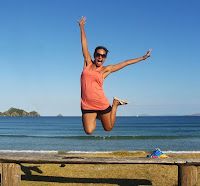In this tutorial you will learn how to repair cracks, scratches, and spots so this photo of the Swedish Nightingale, Jenny Lind, looks just like new. We will purposely avoid using some of the quick fix tools such as the healing brush so that you can gain an understanding of the basics of photo restoration. Let’s get started!
Final Image Preview
Take a look at the image we’ll be creating. Want access to the full PSD files and downloadable copies of every tutorial, including this one? Join Psd Plus for just $9/month. You can view the final image preview below.
Tutorial Details
- Program: Photoshop
- Version: 7 and up
- Difficulty: Intermediate
- Estimated Completion Time: About 4 to 5 hours

Step 1 – Open and Prepare Image for Editing
You can download the source image for this tutorial here. Open the image in Photoshop. Right click on the background layer and select “Duplicate Layer…”

Double click the new layer and rename it “Restoration”. Either lock or hide the background layer so that you can reference it later. Save often.

Step 2 – Apply a Levels Adjustment Layer
Select the Adjustment Layers pallet, then select Levels. Use the settings in this screenshot. Black point at 7, white point at 243.


Step 3 – Set the Eyedropper Tool Sample Size
Select tool (i) and set to a 5 px by 5 px average sampling area.

Step 4 – Retouch the White Spots and Scratches
Using a Soft Round Brush (B) of about 21 pixels, with a hardness of 0, and blending mode set to darken, start filling in the voids in the photo.





Step 5 – Lighten the Dark Areas
Use exactly the same techniques in reverse.

Set the brush tool to the lighten overlay mode, and to clean up dark specks, set the Blur Tool to lighten. Rework the shadows and highlights again to catch flaws missed the first time. When you are finished the photo should look something like this.

Step 6 – Correct the Uneven Background
To not destroy detail in the current painted backdrop, we will work on a new layer to correct the background.

Create a new layer and name it “background corrections”.

Use a relatively large brush of about 400 px to 500 px, with the blending mode set to normal, and a 50% to 80% opacity, begin to even out the background tones.

If you make a mistake, just use the eraser tool with the same settings to correct. Take your time and rework until you are satisfied with the results. Your results may look something like this.

Step 7 – Focus on Jenny Lind’s Face
Zoom in and make the final corrections on Jenny’s face with a 25 px brush, blending mode normal, opacity 70%. Here are the areas of concern, smooth these out to the best of your ability.


Using the layers mask tool delete most of the reference photo except for the eyes, nose, and mouth. Here is how that might appear.

Now I will merge this layer down to the restoration layer, and finish the final details. Here’s the result.


Step 8 – Add Noise
Merge the background corrections layer and the levels adjustment layer with the restoration now. Then Right-Click on your restoration layer and select “Duplicate Layer…”.

Select “Filter > Texture > Grain” and apply these settings. You can rename this layer “Grain” if you like.


Play with the opacity and blend modes on this until you get a nice grain texture throughout the photo. This step masks the smoothness of the restoration and blends it seamlessly into the original photo.

Step 9 – Save a Copy
Save a copy for output to a printer of your choice.
Conclusion
You’re finished! Bask in the warm glow of the praise you will receive for your new found photo restoration skills!























































